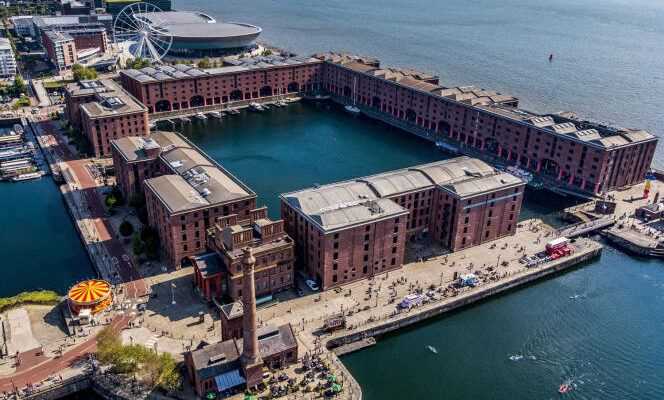Liverpool, a port city in the north-west of England, was removed from the list of 1,125 UNESCO World Heritage sites on July 21. This distinction, which placed it at the level of Mont-Saint-Michel or Athens with the Acropolis, would no longer be justified, according to the UN body in charge of culture, pointing to a construction that distorts the seafront.
The city, despite the 1972 World Heritage Convention, has started building a football stadium on the Bramley-Moore dock. The penalty that hits Liverpool had only been pronounced twice so far. In 2007, it affected the Arabian Oryx Sanctuary in Oman due to the Sultanate’s decision to reduce the protected area of this rare species of antelope by 90%. Six years later, the construction of a four-lane bridge had tarnished the charm of the Elbe Valley in Dresden, Germany.
The Red Devils of Liverpool FC must laugh: the future stadium is that of the Blues of Everton, the other big club in the city. Since their very first match, in 1894, the antagonism between reds and blues has grown steadily. Twice a year, the Merseyside derby is held alternately, in the league, in Anfield stadium, home of the Reds renovated in 2016, and in Goodison Park, Everton’s pre-square. However, this legendary football stadium, the oldest in England, is falling into ruin.
In 2016, Everton announced the construction of a new arena at the port, at a cost of £ 500million. Less titled, less wealthy, the club borrows half from the City, paying interest of £ 7 million per year over twenty-five years.
Cultural exception
Former flagship of English industry having built its fortune on triangular trade, Liverpool sank, in the 1980s, into unemployment and delinquency. But at the turn of the year 2000, the city of the Beatles reinvented itself, focusing on the economy of culture. Named European Capital of Culture for 2008, it bends over backwards to transform its city center, renovate its docks and the banks of the River Mersey.
An investment that pays off: that year, Liverpool welcomed more than 15 million visitors, an increase of 30% compared to the previous year. With spinoffs estimated at £ 753.8 million, the return on investment for this “European Capital of Culture” remains unmatched.
Even degraded by Unesco, Liverpool retains its tourist interest. In the former warehouses of the Albert Dock, the antenna of the Tate Gallery in London is inscribed on the world art map, just like the Louvre-Lens or the Center Pompidou-Metz.
It is also, no offense to international officials, a successful example of the conversion of an industrial building from the 19th century.e century. City figure and 1981 Pritzker Prize winner architect James Stirling (d.1992) has kept the exterior of the shipyard’s brick building intact, including the red Doric colonnade. A gem that is reflected on the course of the Mersey.
